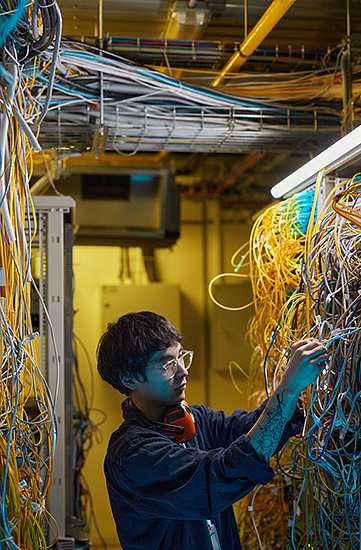BY DR SHAWN CUNNINGHAM
24 NOVEMBER 2021
We are constantly being confronted with predictions of how new technologies may affect our workplaces, our personal lives, and how we interact with others. Even if we ignore all the hype, we can sense how digital technologies are being embedded into more and more of the everyday devices that we use to control the environments around us.
Within this sea of contrasting and ever-changing information, managers must make decisions while balancing short-term operational requirements with potential longer-term strategies. Do they continue with the incremental changes within technology domains that are more familiar? Or do they take the plunge by switching to alternative technologies and all the uncertainty that comes with trying something different? Or is it possible to try several alternatives while still building on what is already in place?
The TIPS Technological Change and Innovation System Observatory has been working with the Department of Trade, Industry and Competition and its stakeholders to develop an integrated, strategic response to discontinuous technological change and disruptive innovation. We have witnessed how important it is to consider not only the direct consequences of each emerging technology by itself, but to understand the changing demands on the organisational and institutional innovations that are needed to make technological absorption or adaptation possible.
The challenge in South Africa is that far too few companies can confront the opportunities and the steep learning curves involved in mastering emerging technological opportunities. It is often too costly to figure out the technological frontier alone without appropriate public investments and simultaneous investments in the private sector.
Furthermore, the physical characteristics and technical features of new technologies capture almost all the attention, while the social innovations needed to master a technological domain are neglected.
Even buying a new technology off the shelf may require simultaneous innovations in complimentary capabilities, additional skills, and new workplace arrangements. The risks are even higher when the new technological capabilities require the coordinated mastery of new knowledge domains, markets, materials and supplier networks.
Guide to innovation needed to make new technology work
The following questions are a guide to exploring some of the arrangements, competencies, and additional changes that must be thought through to integrate new technology.
These questions can be explored by the leadership of a company, or in a broader network, to make sense of the social innovations and other support that may require innovation to make new technology work in the given economic context.
- Technological input: What is the technical novelty or scientific merit of the innovation, what does it promise?
- Competence requirements: What is needed to make this technology work effectively within the organisational context? What is the new knowledge, additional skills, organisational arrangements, capital, supplier networks, additional technologies and infrastructure that needs to be secured?
- Market effect: What does this new technological capability mean for our customers? What expected new functions/features are being offered to the market?
Strategic effect: What is the impact on the competitive position of our organisation or our industry? How will those that interact with us have to change their strategies? - Supporting technological capability in the ecosystem: Who can we rely on for technical assistance, problem solving, testing or other technological support?
- Anticipated regulatory adjustments: What regulation will be required, or has already changed elsewhere and will most likely have effects here at some point? Anticipate how regulations might change based on regulatory changes in other countries.



